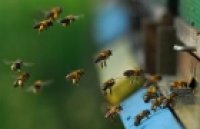| OsLRR-RLP2 Gene Regulates Immunity to Magnaporthe oryzae in Japonica Rice |
|
Rice is an important cereal crop worldwide, the growth of which is affected by rice blast disease, caused by the fungal pathogen Magnaporthe oryzae. As climate change increases the diversity of pathogens, the disease resistance genes (R genes) in plants must be identified. The major blast-resistance genes have been identified in indica rice varieties; therefore, japonica rice varieties with R genes now need to be identified. Because leucine-rich repeat (LRR) domain proteins possess R-gene properties, we used bioinformatics analysis to identify the rice candidate LRR domain receptor-like proteins (OsLRR-RLPs). |
|
Hyo-Jeong Kim, Jeong Woo Jang, Thuy Pham, Van Tuyet, Ji-Hyun Kim, Chan Woo Park, Yun-Shil Gho, Eui-Jung Kim, Soon-Wook Kwon, Jong-Seong Jeon, Sun Tae Kim, Ki-Hong Jung, Yu-Jin Kim. Int J Mol Sci.; 2024 Feb 12; 25(4):2216. doi: 10.3390/ijms25042216.
AbstractRice is an important cereal crop worldwide, the growth of which is affected by rice blast disease, caused by the fungal pathogen Magnaporthe oryzae. As climate change increases the diversity of pathogens, the disease resistance genes (R genes) in plants must be identified. The major blast-resistance genes have been identified in indica rice varieties; therefore, japonica rice varieties with R genes now need to be identified. Because leucine-rich repeat (LRR) domain proteins possess R-gene properties, we used bioinformatics analysis to identify the rice candidate LRR domain receptor-like proteins (OsLRR-RLPs). OsLRR-RLP2, which contains six LRR domains, showed differences in the DNA sequence, containing 43 single-nucleotide polymorphisms (SNPs) in indica and japonica subpopulations. The results of the M. oryzae inoculation analysis indicated that indica varieties with partial deletion of OsLRR-RLP2 showed susceptibility, whereas japonica varieties with intact OsLRR-RLP2 showed resistance. The oslrr-rlp2 mutant, generated using clustered regularly interspaced palindromic repeats (CRISPR)/CRISPR-associated protein 9 (Cas9), showed increased pathogen susceptibility, whereas plants overexpressing this gene showed pathogen resistance. These results indicate that OsLRR-RLP2 confers resistance to rice, and OsLRR-RLP2 may be useful for breeding resistant cultivars.
See https://pubmed.ncbi.nlm.nih.gov/38396893/
Figure 1. Heatmap analysis for indel (≥3 bp) frequency of 453 high quality accessions compared to Nipponbare of 857 leucine-rich repeat domain (LRR) genes in rice. (A) Heatmap representing genes with LRR domains between difference species, (B) 277 genes significantly differentially expressed under biotic stress, and (C) 16 genes were upregulated under blast and white bacterial blight disease treatments. |
|
|
|
[ Tin tức liên quan ]___________________________________________________
|


 Curently online :
Curently online :
 Total visitors :
Total visitors :
(286).png)
(267).png)


